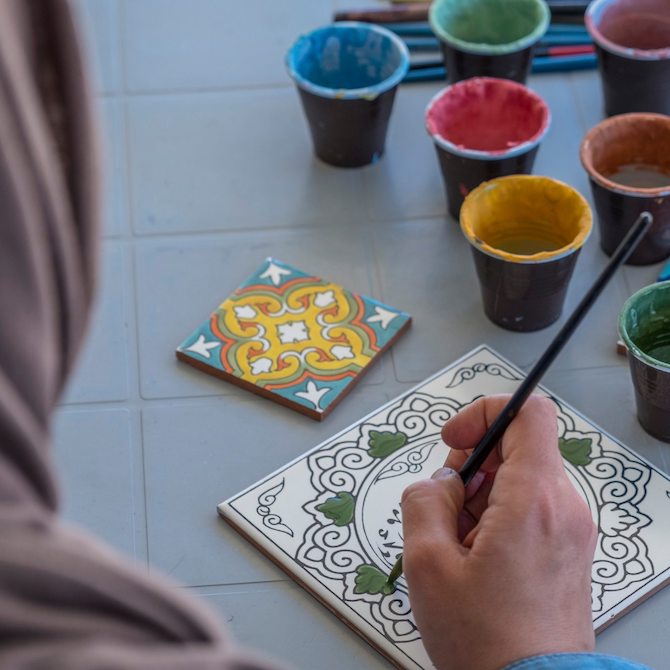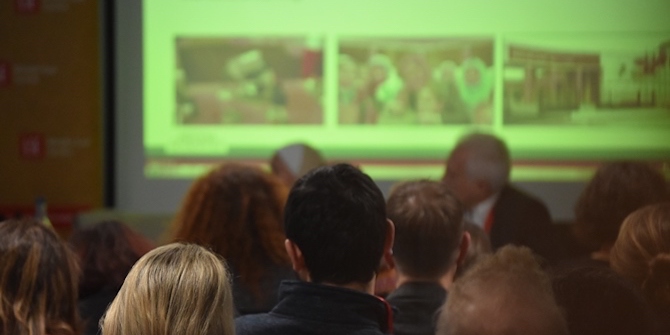by Emma Redondo

This investigative article aims to shed light on factors that compromise women’s economic participation in Jordan through handicraft. Aside from the experience and knowledge I was able to gain and gather in this investigation thanks to my work, I conducted interviews with several actors, who further enlightened my reflection. I would like to thank my interviewees for their time and trust: Mazen Al-Ali, Mariam Bitar, Maram Abu Amra and Anonymous, as well as Mohammad Sbeitan for his assistance.
Over the past three and a half years, I worked for an e-commerce platform that supports creative producers across Jordan. Any individual can apply to sell her/his handmade or locally produced items, however, the products have to meet a series of criteria to be featured on the platform. The goal is to sell quality products for customers to purchase on a regular basis, and thus to provide stable income for the producers in the long-term. In this context, daily applications are being processed, and many products do not match the selection criteria and market standards. There is a recurrent pattern that has been noticeable with time: numerous received applications are from ladies working from home producing a high number of different products. These applications look alike – same type of crafts, similar products, lack of design skills, poor finishing, and no proper visual identity.
Undoubtedly, several factors have brought many women in Jordan to produce, maintain, and put for sale low quality handicraft, negatively affecting their economic participation.
Many of the women I encountered were deeply convinced that their products were well-finished and beautifully made, and believe that their main struggle is a lack of marketing. However, most of the time their products are as described above: unsellable at the scale of the national or international market. In other words, a high number of women producers do not question the sellability of their work beyond their communities and hardly accept constructive feedback from professionals. Such stubborn thoughts are one of the results of the mujamale (flattering people, about the way they look or their work, without sincerity) culture as most of the women would hear how outstanding their work is from their family and surroundings. On the other hand, the difference of tastes cannot be omitted, the taste could vary from one group to another and there are certainly people who genuinely love such a type of handicraft. Mazen Alali, a designer and trainer, comments: ‘We shouldn’t forget that many women making products do it originally for their personal use and not for being commercialised. It can be one of the reasons why several women producers would not necessarily have the same taste as what sells on the market.’ Nevertheless, the reluctance to receive and accept constructive criticism has probably been fed by the mujamale culture. That is, the mujamale culture has affected and shaped the work of many women producers by keeping them in their comfort zone, including copying each other’s work, instead of stimulating their creativity and exploring what they are genuinely capable of. Maram Abu Amra, a concrete artisan, states:
‘We studied architecture at university so we got used to receiving straightforward feedback from our professors and knowing how to apply the received comments to improve our work. Mujamale is definitely present in society but it absolutely shouldn’t influence us when providing or receiving feedback, otherwise it’s very hard to enhance our work and reach a high level.’
Furthermore, the mujamale culture has contributed in devaluing the local know-how by spreading the idea that any individual, with limited work and knowledge, is able to become an artisan or artist – this idea has remained and has been, directly or indirectly, strengthened by several International Non-Governmental Organisations (INGO) in Jordan.
In 2015, USAID led a survey where 97,347 households were contacted for an interview, after which 10,197 of them reported owning a business. Many households were leading business activities generating income but were not registered, and therefore not counted as part of the economic life. The USAID study was a catalyst; INGOs in Jordan started to receive funds from the international donor community to implement projects aiming to register these informal businesses, named home-based businesses (HBB), as well as training that could help the owners to scale up their business. An additional goal of the HBB projects was to increase the participation of women in the economy, as according to UNWomen in 2016, only 20% of Jordanian females worked in a registered company. Furthermore, 26% of unemployed women declared to prefer working from home, while 44% had no preference, hence making women run HBBs seemed to be a suitable option, since it would comply as well with their preferences and lifestyle – social norms and household chores.
Stemming from the fact that an important number of INGOs have received funds to implement their HBB projects, the women producing low quality handicraft products became subject to be the ‘beneficiaries’ of the INGOs. Thus, many of them registered their business and underwent training. By providing marketing and entrepreneurship training, without taking into consideration the sellability of the handicraft products, some INGOs have fed further the idea that low quality handicraft is acceptable and can be sold on the market while fostering the hopes for certain women to increase their sales. Mazen Alali mentions:
‘I’ve mentored several women who presented to me low quality handicraft work. Many would think that their work is sellable, and mentioned that they underwent handicraft training organised by NGOs. I strongly think that some of their generated sales came from “pity-buying”; the tendency of some organisations to encourage people buying products not because those are of a great quality and locally produced but rather because the products were made by a poor person, most of the time women or refugees.’
An important number of participants ended up being disappointed by seeing their sales remaining the same. The rest of the participants who would attend such training are usually rather motivated by the delivered certificate or the subsidiaries they can potentially receive from the INGOs. There are some exceptions but the participants who would benefit truly from these services are the ones who already have products that can compete on the market; they are a minority amongst the participants. A community development worker, who implemented projects related to HBBs, states:
‘I couldn’t see at the end of the projects any beneficiaries generating sustainable income. At the beginning of the projects, it happened that women were taught by a trainer how to make soaps, however, without taking into consideration what types of products or designs truly sell on the market. It was a vicious circle: the women were taught obsolete knowledge while having the staff of our organisation, field workers and trainers, assuring them that their work was great and sellable.’
Although many women work in the handicraft field in Jordan, the majority do not generate or increase their income due to the massive and persistent production of items not matching the market standards. The fabrication of such products is mainly due to the difference of tastes and the mujamale culture that induces the idea that any work is outstanding, and hence limits the creativity of the women, who then tend to copy each other’s low quality crafted items. Instead of trying to revitalise the true know-how and explaining market standards, several INGOs have contributed to the spread and production of the low quality craft products on the market.
Women creators face many other obstacles to the development of their products (lack of financial resources to buy raw material, dependence on imported material etc.). It is essential to start understanding the aspirations of each woman, and perhaps many of them would drastically enhance their work or would dedicate themselves to different professional activities that would suit them better. However, for women to feel truly accomplished, passionate, and excel at what they are doing, they should first be able to express and reflect on themselves freely – without people or entities deciding for them and far from their daily mental charge and chores.






